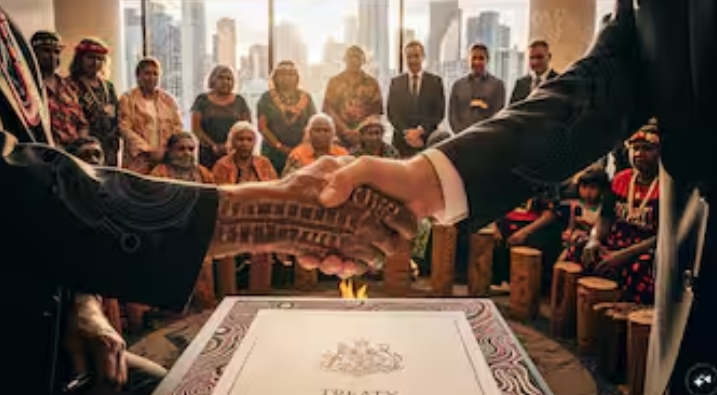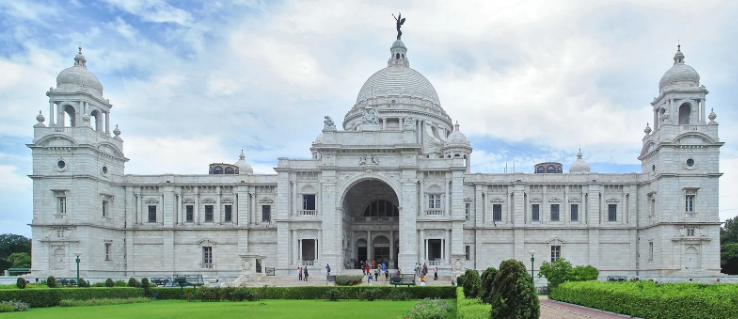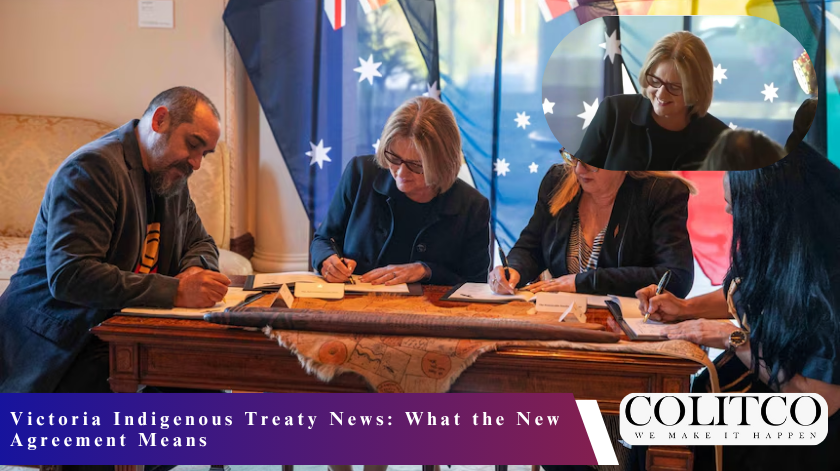The government of Victoria has entered into a historic agreement with the First Nations people, which has become quite a momentous event in the history of Indigenous-state relations.
The treaty brings about a mandatory partnership for cooperation, acknowledgement of rights and accountability to play throughout the entire state. The state government and the First Nations of Victoria are now in a new relationship that will be long-lasting and based on the pillars of respect, trust, accountability and integrity.

Victoria and First Nations sign historic agreement reshaping Indigenous-state relations.
How Will the Victoria Indigenous Agreements Work?
The treaty creates a forever existing representative body called Gellung Warl that will represent First Peoples’ interests not only as a voice but also as a decision-making partner all over Victoria. Besides, the treaty provides for truth-telling and accountability arms that will guarantee the government will carry out its promises and remedy historical injustices.
The structure will serve to support the negotiation of interpersonal agreements between the state and the various First Nations groups, with the initial idea being a general model for all life, culture and governance issues across the continent relating to the Indigenous community.
Why Is This Treaty Significant Internationally?
At the international level, modern treaties between colonial state governments and Indigenous peoples are hard to find and even rarer in Australia, where this has now become a first case.
The signing of the treaty in Victoria makes Australia one of the countries that recognise formal agreement-making processes with indigenous peoples, alongside Canada and New Zealand. That international context makes the decision of the state more powerful and provides a benchmark for other states or territories that are contemplating similar arrangements.

Global modern treaties with Indigenous peoples are rare, making Australia’s first historic.
The Victorian Treaty Creates a New Era
The law that makes this treaty formal grabs the attention of all parts of Australia, as it is not only the state of Victoria but the whole area that is going to be the first in Australia to have such a wide-ranging agreement with the Indigenous people.
It also declares a new era of determined self-governance, legal recognition and joint decision-making for the First Nations in Victoria. The government, through the treaty, acknowledges the necessity of embedding indigenous viewpoints in policy matters related to housing, health, education and cultural heritage.
What Is the National Context for First Nations Treaty Victoria?
The other states and territories in Australia have, at one stage or another, opened up consultations, but none have come close to the legislative progress made in Victoria. Some regions have even stalled or withdrawn their plans for treaties.
As a result, the first treaty has not only become a standard for the whole nation but also might have an impact on treaty negotiations in other places. The 2023 national vote aimed at granting an Indigenous advisory voice failed, which made the case of sub-national treaties like that of Victoria even stronger.

Other regions consulted but lagged Victoria, with some abandoning treaty plans.
What Happens Next for Victoria Indigenous Agreements?
Detailed agreements that have been negotiated with the First Nations will come after the treaty framework has been established. The main concern will be shifted from the plans to their actual implementation: making sure there is proper consultation, providing measurable improvements in social and economic areas, and holding governments accountable. The measure of success will be the real change happening on the ground, not a mere signing of documents to mark the occasion.
Also Read: Adult Sentencing for Under 18s Victoria Targets Serious Youth Crime
FAQs
Q1: What does the treaty in Victoria include?
It includes an official treaty between the government of the state and the Indigenous peoples of Victoria to establish joint decision-making, truth-telling and accountability mechanisms, and to open negotiations for further treaties in various areas.
Q2: The treaty will be valid for all indigenous peoples in Victoria, won’t it?
The treaty has a state-wide effect and sets a preliminary framework for future partnerships with single First Nations, thus, gradually, affecting all Indigenous communities in Victoria.
Q3: Wasn’t the state of Victoria the first to enter into a treaty with the Indigenous peoples of Australia?
The treaty is the first of its nature in Australia, a legally binding statewide treaty between the state and First Nations people.
Q4: What is the position of this treaty in the international context of Indigenous peoples and state relations?
It positions Victoria alongside like areas, Canada and New Zealand that have treaties or agreements with Indigenous peoples; thus, it is a significant international step for the Aboriginal and non-Aboriginal relations in Australia.












